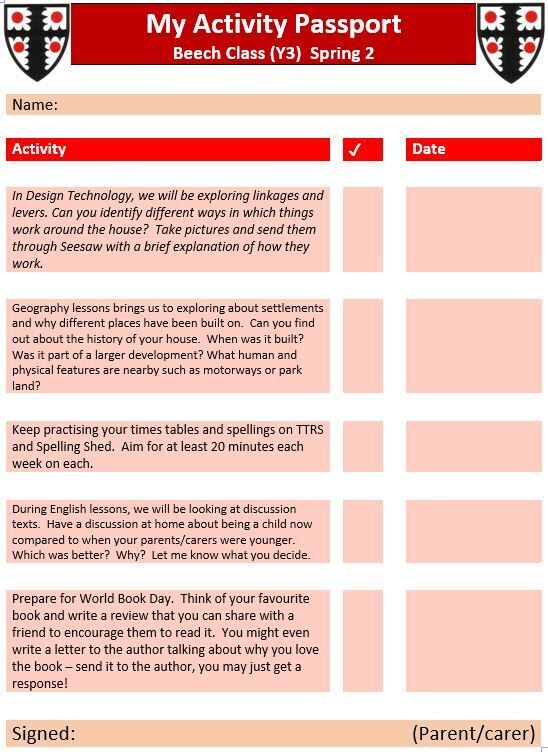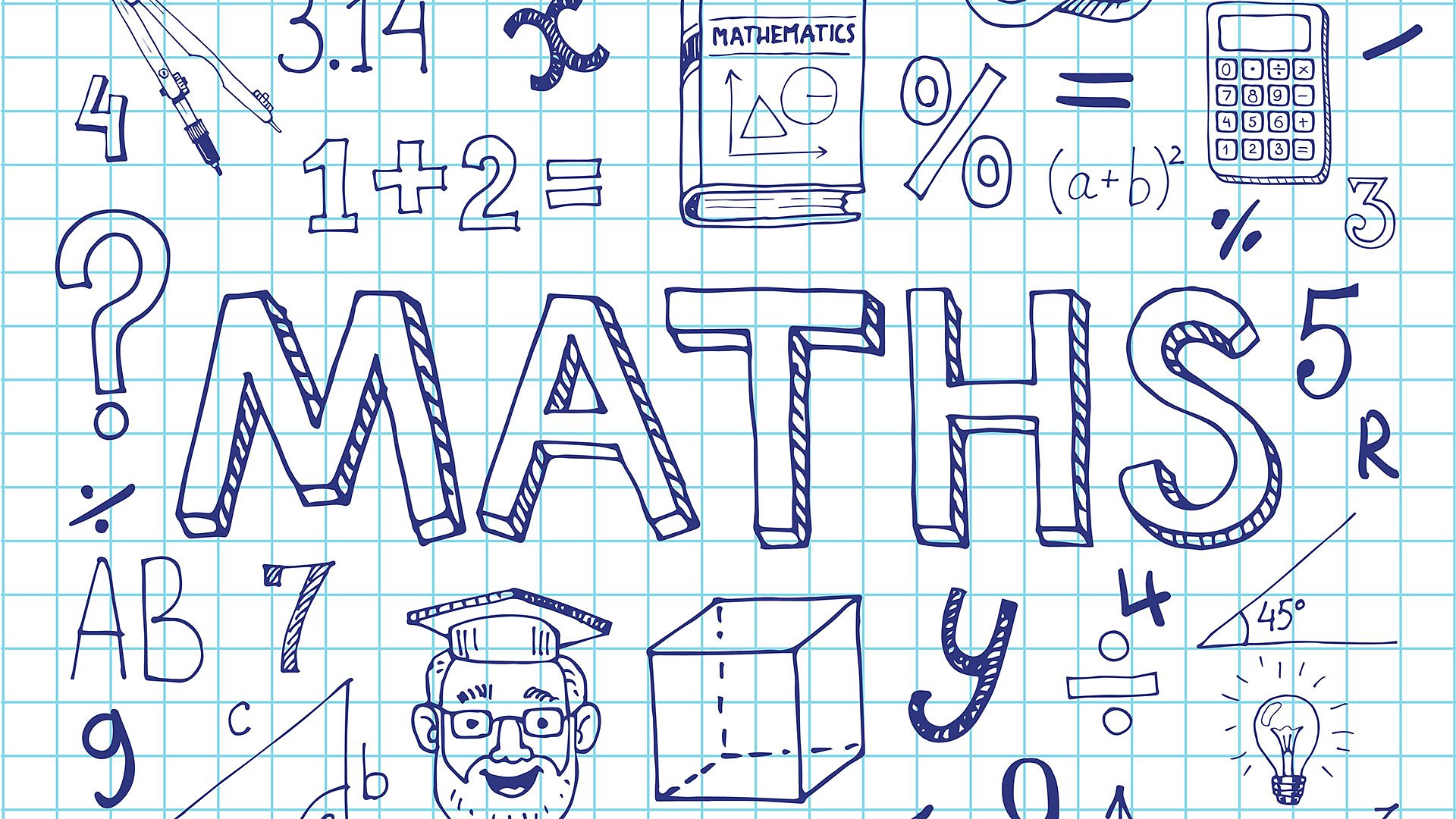Supporting my Child's Progress
Each half term, years 1 to 6 send out an activity passport through Seesaw. Don't forget to check it out to see what they'll be learning!

English
We use a range of resources from Oxford to support the teaching of Phonics and Reading. Click on the Oxford Owl link here to access a range of resources including free e-books. We also use IDL cloud which is designed to support children with dyslexia, but we have found it is a valuable resource for children of all ability ranges.
Other resources to support the teaching of English, including the requirement to understand a wide range of grammatical terms, can be found below:
Vocabulary, grammar and punctuation appendix from the National Curriculum
We also use Pie Corbett's reading spine from Nursery to Year 6. More information is available here.
Reading
Parents often wonder how they can help to develop the reading skills of children who are already fluent readers. The best way is to continue to share books with your child, regularly listening to them read, sometimes reading to or with them, but also discussing books read in increasing depth. To become good readers children need to develop skills in seven key areas and it can be useful to think about these when reading with your child.
The seven key areas of reading
Questions to ask during reading Key Stage 1 and EYFS
10 top tips for parents to support reading at home
1. Encourage your child to read
Reading helps your child’s wellbeing, develops imagination and has educational benefits too. Just a few minutes a day can have a big impact on children of all ages.
2. Read aloud regularly
Try to read to your child every day. It’s a special time to snuggle up and enjoy a story. Stories matter and children love re-reading them and poring over the pictures. Try adding funny voices to bring characters to life.
3. Encourage reading choice
Give children lots of opportunities to read different things in their own time - it doesn’t just have to be books. There’s fiction, non-fiction, poetry, comics, magazines, recipes and much more. Try leaving interesting reading material in different places around the home and see who picks it up.
4. Read together
Choose a favourite time to read together as a family and enjoy it. This might be everyone reading the same book together, reading different things at the same time, or getting your children to read to each other. This time spent reading together can be relaxing for all.
5. Create a comfortable environment
Make a calm, comfortable place for your family to relax and read independently - or together.
6. Make use of your local library
Visit them when you’re able to and explore all sorts of reading ideas. Local libraries also offer brilliant online materials, including audiobooks and ebooks to borrow. See Libraries Connected for more digital library services and resources.
7. Talk about books
This is a great way to make connections, develop understanding and make reading even more enjoyable. Start by discussing the front cover and talking about what it reveals and suggests the book could be about. Then talk about what you’ve been reading and share ideas. You could discuss something that happened that surprised you, or something new that you found out. You could talk about how the book makes you feel and whether it reminds you of anything.
8. Bring reading to life
You could try cooking a recipe you’ve read together. Would you recommend it to a friend? Alternatively, play a game where you pretend to be the characters in a book, or discuss an interesting article you’ve read.
9. Make reading active
Play games that involve making connections between pictures, objects and words, such as reading about an object and finding similar things in your home. You could organise treasure hunts related to what you’re reading. Try creating your child’s very own book by using photos from your day and adding captions.
10. Engage your child in reading in a way that suits them
You know your child best and you’ll know the best times for your child to read. If they have special educational needs and disabilities (SEND) then short, creative activities may be the way to get them most interested. If English is an additional language, encourage reading in a child’s first language, as well as in English. What matters most is that they enjoy it.
Writing

Best ways to support writing at home
1. Provide a place for your child to write
The area should be an area that is quiet and well lit. Stock the “writing center” with supplies such as paper, pencils and crayons. You can also gather family photos and magazines in the center that can be used as story starters.
2. Read, read, read
The best activity to improve writing is reading. If your child reads good books, he will be a better writer. Reading exposes students to general vocabulary, word study and content-specific vocabulary. Through reading, students see a variety of authors’ techniques that they can use in their own writing.
3. Encourage your child to keep a reflective journal
This is excellent writing practice, as well as a good outlet for venting feelings. Encourage your child to write about things that happen at home and school. This reflective journal can be used to develop the “senses” of writing. Have your child write about what he saw, heard or felt on a trip or adventure. Provide experiences in your community that will interest your child and spark her writing. Especially encourage your child to write about personal feelings — pleasures as well as disappointments. When reading your child’s journal (only if your child invites you to, of course), share your own feelings and ideas paired with positive feedback about your child’s writing.
4. Provide authentic writing opportunities for your child
Have your child write his own thank-you notes, party invitations and letters to family. Let your child make the grocery list. Finding a pen pal for your child would make writing “real.” Helping children make the connection between writing and the “real” world will increase an interest in writing.
5. Be a writing role model
Make sure your child sees you as a writer. Point out times that you use writing to communicate with others. Discuss authentic writing in the community such as articles and letters in the newspaper, on billboards or in written advertisements. Discuss the purpose of the writing and the target audience. When your child writes, you should write. You can schedule a day of the week that you will turn off the television and share your writing.
6. Start a vocabulary notebook
Teach your child new words each week and encourage her to use them. Make it into a game and give points for using the new words. Your child can keep a vocabulary notebook and get rewarded for the number of new words learned. The words will begin to appear like magic in her oral language and writing.
7. Ask questions
Always ask your child questions when he writes. Ask specific questions about your child’s writing such as: “How did that happen?” “How did that make you feel?” “Can you tell me more about that…?” “What are some other words you could use to describe…?”
8. Help your child publish her writing
Share her writing with others, place it on the refrigerator or encourage her to write for kids’ magazines. When your child’s writing is published in a children’s book, she will be on her way to becoming a lifelong writer and author. Check out these options for publishing children’s work:
Maths
White Rose Maths is our chosen approach for teaching maths. Click on the link here to find out how we teach this subject. Speak to a member of staff to find out more about how you can help at home. You can also access a range of free resources from White Rose Maths here.
Key Learning
For information about the different learning that will take place in each year group, click on the link to a PDF document. It is really important that your child accesses the learning for the year they are in.
To access the information used during our information evening click here
Reading
Year 1
Year 2
Year 3
Year 4
Year 5
Year 6
Writing
Year 1
Year 2
Year 3
Year 4
Year 5
Year 6
Maths
Year 1
Year 2
Year 3
Year 4
Year 5
Year 6
Science
Year 1
Year 2
Year 3
Year 4
Year 5
Year 6

















